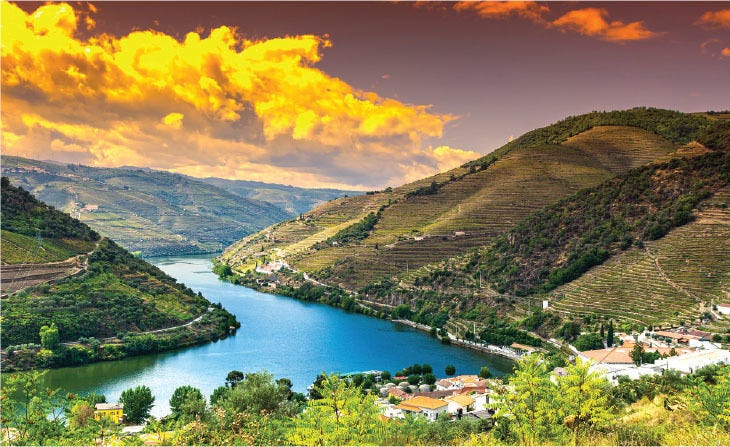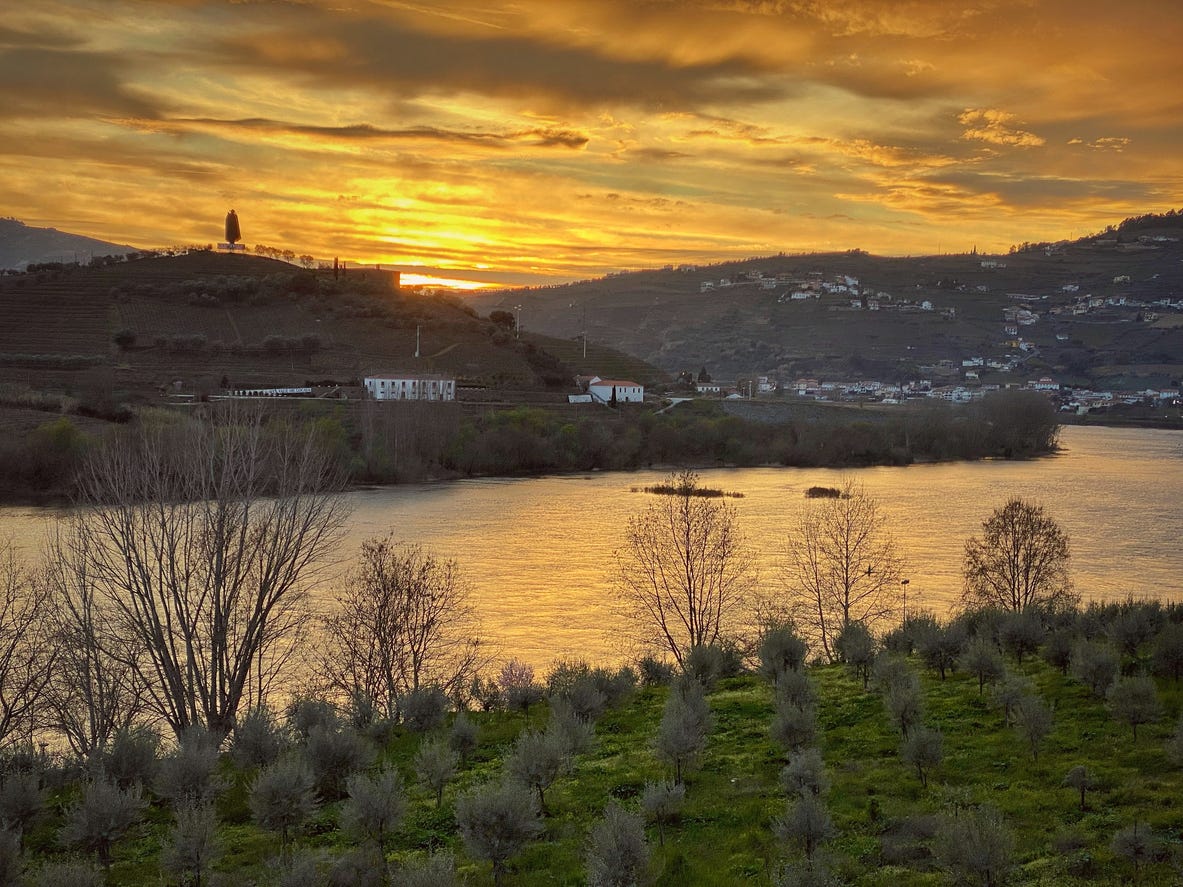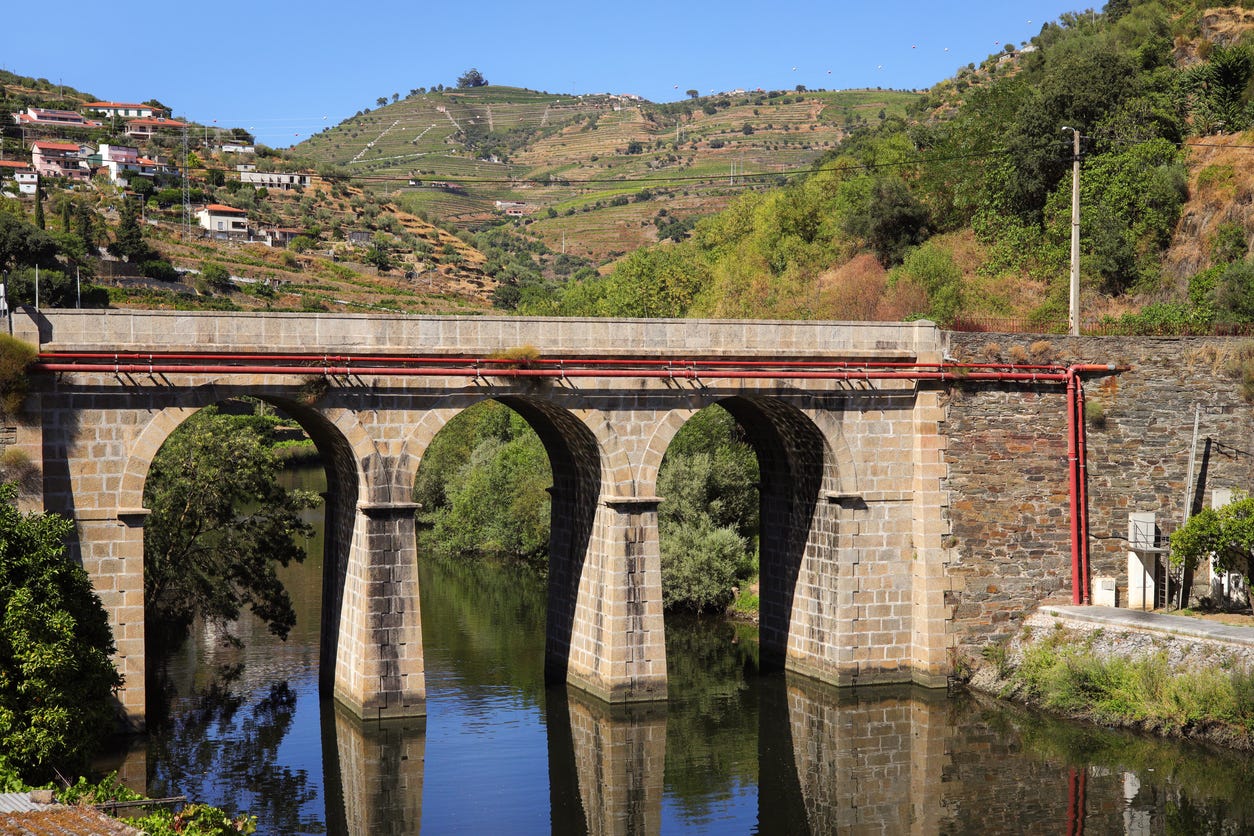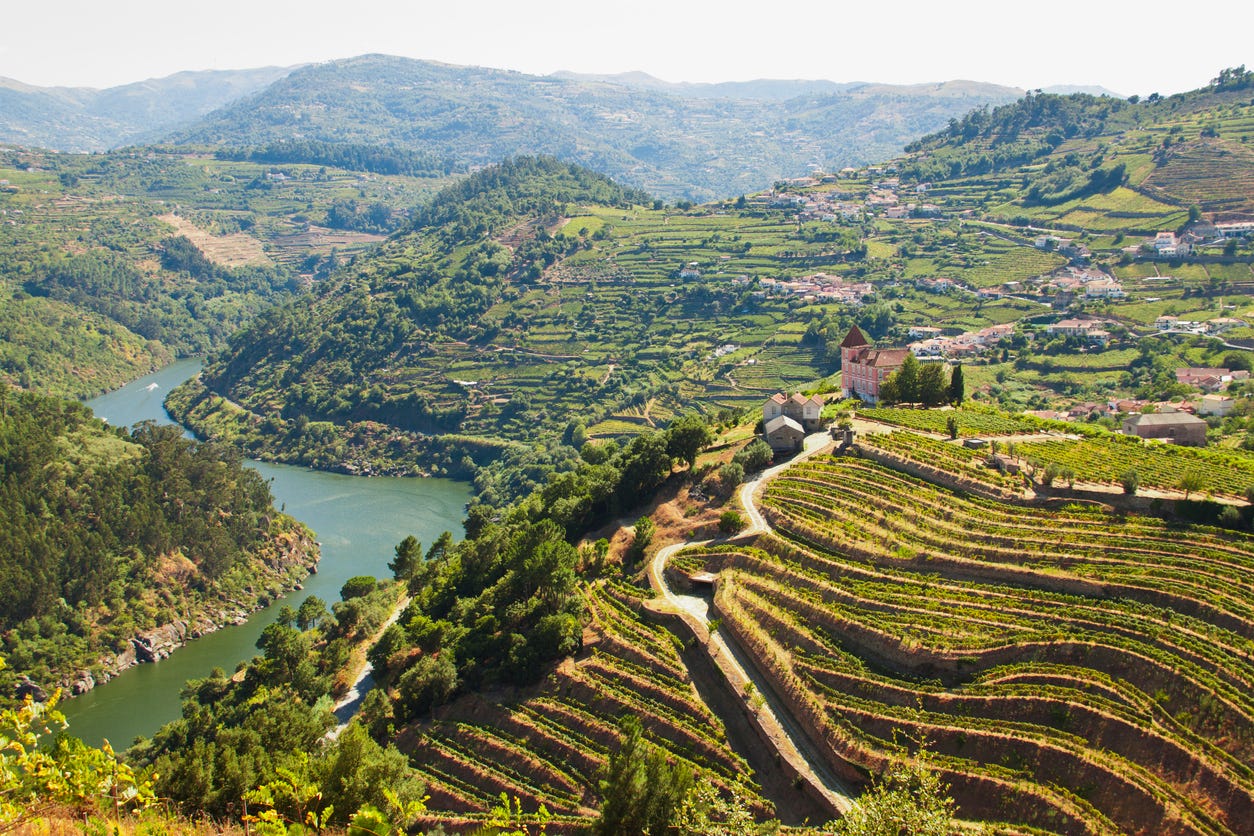Three Old Friends Charter a Yacht on Portugal’s Douro
Reuniting after decades on Portugal’s timeless Douro — where vineyards, river towns, and old memories flow together.

Personified as the god “Darius” by the Romans for 700 years, the Douro River has been a purveyor of commerce and culture for millennia.
Now, as my two friends and I made our way to its ancient banks, we were ready to add our own history to its timeless waters.
We were old friends, Paul, Terry, and I—and by old, I mean it had been well over forty years ago since we’d worked together on a Northern California beach for the National Park Service.
While they’d stayed in the US, I’d left more than twenty years ago to teach English overseas and eventually settled down in Portugal, thanks to its bargain-basement property values.
It had been some time since I’d seen Paul or Terry, and even longer since we’d found ourselves all together. It was Paul’s idea to travel the Douro for our reunion in my adopted country, and it was he who booked our private three-day trip with Sailo, a global boat and yacht charter company, for $3,615 all in.
The coming adventure would be worth it for the memories. Whatever past each of us held would be left on the dock that morning. Invariably, they’d be there when we got back. But the opportunity for us to saddle up and ride together again beckoned—albeit with arthritic pain and reading glasses this time around.
Casting Off for a Three-Day Trip

Our home for the next three days and two nights would be a 42-foot cabin cruiser, captained by Tiago, who’d skippered on the Douro since he was 17.
Along with Daniel, the accompanying deckhand, gourmet chef, and helmsman-in-training, our journey was to take us as far as Pinhăo in the heart of Vinhateiro, or Vine Land, the famous region of the Douro Valley where grapes are cultivated to produce the most renowned vintages of port wine worldwide.
Our itinerary would see us spending one night in the town of Régua as we traveled east up the river, and another night in Pinhăo, our turnaround point.
We’d be comfortable enough on this boat. With lounging areas both aft and beside the helm, lower and forward berths, and the kitchen and shower room, there was plenty of space to walk about, recline at our leisure, and enjoy nicely prepared noshes, gin and tonics, the distinctive Portuguese vinho verde (green wine), and anything else that would keep us cool and content in the late September heat on the Douro River.
Tiago maneuvered the boat from the marina into the channel, and the river opened itself up to us. It would be a hot and sunny day, but the mid-morning air still held a cool touch to it, like a welcoming gift.
Leaving Touristy Portugal Behind
A light breeze stirred as we moved past the municipality of Gondomar, a few miles east of Porto’s city center, where the sidewalks were crowded and the streets congested.
Occasionally, fish that Tiago identified as tainha, or mullet, broke the river’s surface between us and the passing landscape. A gray heron glided along the trees that lined the southern shore.
It was only a short while until we reached the first dam, the Crestuma-Lever, one of two we would need to pass through on the first day. As we waited to enter the lock that would hoist us up to the river’s water level on the other side, Daniel served up a plate of Portuguese pastries: pastel de nata, păo de deus, queijada, among others, while the morning sun began to warm.
Soon after, we stopped for coffee at Quinta de Santo Antonio. While Terry and I got a strong dose of caffeine and enjoyed the view, Paul sauntered off… as he was prone to do. Once back on board, he showed us photos of a cemetery he’d stumbled across.
“Every single grave had fresh flowers,” he said, and I could see it was true. In my years in Portugal, I’ve found the Portuguese quietly appreciate their lives in the smallest of ways. And those who are no longer here are appreciated as well.
The Portuguese aren’t without their superstitions, either. As we set off again, it wasn’t long until we came across a 40-foot-tall golden angel that rose above the water on the south bank, where two bridges curiously cross the river side by side.
The monument is a tribute to the victims of the old Hintze Ribeiro Bridge, when it collapsed in March of 2001 during massive flooding on the Douro. The locals refused to use the newly replaced bridge; they overwhelmingly regarded it as “cursed” by the disaster, so a second bridge was built only feet away.
With the day’s heat in full swing, we stopped for a swim in the river’s cool water before reaching the second dam, the Carrapatelo, at mid-afternoon.
The timing of our arrival had us wait for one of the massive “hotel boats” that was coming down the river. These boats, which can reach over 150 feet in length, are common on the Douro. They boast the same amenities as any of the larger, more recognizable cruise ships that go from one open-sea port to another.
When we finally exited the lock, we could see not far off a large, Roman-built bridge, beautifully intact, still effectively connecting two hillsides after centuries: a testament to the river’s long history.

First Stop: A Not-So-Sleepy Small Town
We’d traveled about 70 miles by the time we reached the town of Peso da Régua—or just Régua, as the locals call it.
Here, the Douro River Valley’s vast vineyards cover the hillsides in terraced rows and the landscape rises dramatically up from the banks of the river.
A few hotel boats were docked near ours for the night, and when the three of us sauntered into town, the sun had already set. It was eerily quiet. We wandered the dark streets trying to find a place that was open.
“Does anyone actually live in this town?” Terry quipped.
After a short while, we finally found O Maleiro, a nice, cheap place to indulge in the local cuisine. The tables were packed with people from the hotel boats, yet the one waiter working never missed a step. The night had a perfect temperature, and everyone was enjoying themselves with the excellent food, wine, and good company. We heard a variety of different languages being spoken at the adjoining tables.
After a pleasant walk back to our boat, we nestled in for the night, and I tucked myself on the stern deck where the river’s fresh air and the starry night above soon brought on a deep sleep.
We sauntered back into Régua the next morning for breakfast, and it was a completely different town. The streets were busy, shops were open, with people walking to work, or crawling along in traffic on the small avenues.
It was clearly a town that operated according to the locals, rather than the tourist trade that stops at the riverside docks. Whether or not tourists showed up, the people of Régua had things to do.
The authentic feel of the place made me want to return and enjoy the local atmosphere for nothing more than what it is.
After finding a little pastelaria (pastry shop) for a bite, we discovered the Douro Museum, one of the best museums I’ve had the pleasure to visit.
Dedicated to promoting the active preservation of cultural artifacts within the Douro region, its collection and purpose not only features fine art, but also ongoing efforts toward ecological, economic, and historical awareness initiatives that include the restoration of old texts, historical and artistic study, documentary photographic surveying, and sustainable curative intervention for the region. It’s a can’t-miss stop.
Second Stop: Wine Country’s Heart

Our departure from Régua was under another clear sky. We passed under the old roadway, known as the Portuguese “Route 66,” and soon we were at the Régua Dam, our last to pass through.
While we waited for the green light to enter, we heard gunfire in the hills above. “Most likely locals hunting wild boar,” Tiago reassured us.
It didn’t take long for us to reach Pinhăo, the heart of Douro Valley wine country. With a good part of the afternoon still ahead of us, we booked a wine-tasting tour at one of the smaller vineyards, Real Campanha Velha, a family business founded in 1756 and still run by Portuguese.
From the top of the ridge where rows upon rows of grape vines stretched for miles, we could see the now distant Douro River snaking its way below.
We sampled the grapes off the vine, sweet as candy. Back at the wine-tasting house, we sized up their Ruby and Tawny ports, as good as any my unsophisticated palette had tasted.
I couldn’t help but to offer a toast to the moment: “Here’s to the different paths we took that have once again converged in this beautiful place and this beautiful now.”
Pinhăo was just as provincial as Régua, its streets a bit narrower and more labyrinth-like. We had dinner at a small restaurant called The Bridge, next to an old Roman bridge (hence the name). With wine tasting still fresh in our minds, we ordered a bottle of port… then another… and another after that.
We indulged our palates with the best regional dishes we had had on the trip yet, and the little I can remember from the night is being among very good old friends.
Final Stop: A Long-Abandoned Mansion
The sun was yet to rise over the high ridge as I stayed wrapped in my blanket on the stern deck, sipping the strong coffee Daniel had handed me.
It would be a slow and steady journey all the way back to the marina, but one last stop on the return allowed us a short while to enjoy the riverside charm of Porto de Rei.
There, I made my way alone up to a palatial mansion: the House of Porto Rei, known locally as the “Great House.” It was opulent when it was built in the 16th century, but now stood abandoned.
I was astounded by its size, its decaying beauty, and its magnificent architecture. I could still feel the life it once had as I circled the property, many of the windows broken, but grand curtains still draped the house’s interiors. I came back to the boat with ghosts in my head.
When we reached the marina late in the day, we said our goodbyes to Tiago and Daniel, and thanked them for their good service and company.
When our journey first began, we didn’t know what to expect from it—but in the company of old friends, the ancient Douro River suddenly became more personal for us as we absorbed its history and its cultural charm.
It was an experience worth anyone’s time, an experience that would capture the imagination of those back home through the stories we would tell of it: this ancient waterway that allowed three old friends to pause for a short while before that vast, open sea of unknown waters comes into view.
We went home in our own directions, thankful for the memories that three days on the Douro River had given us.
— Avery Chmelewski
Editor’s Note: This story first appeared in the pages of International Living magazine. Want more tales and expert insights like this? Click here to learn more.


